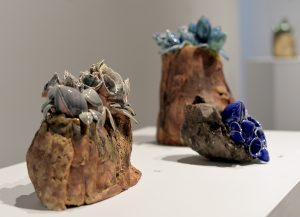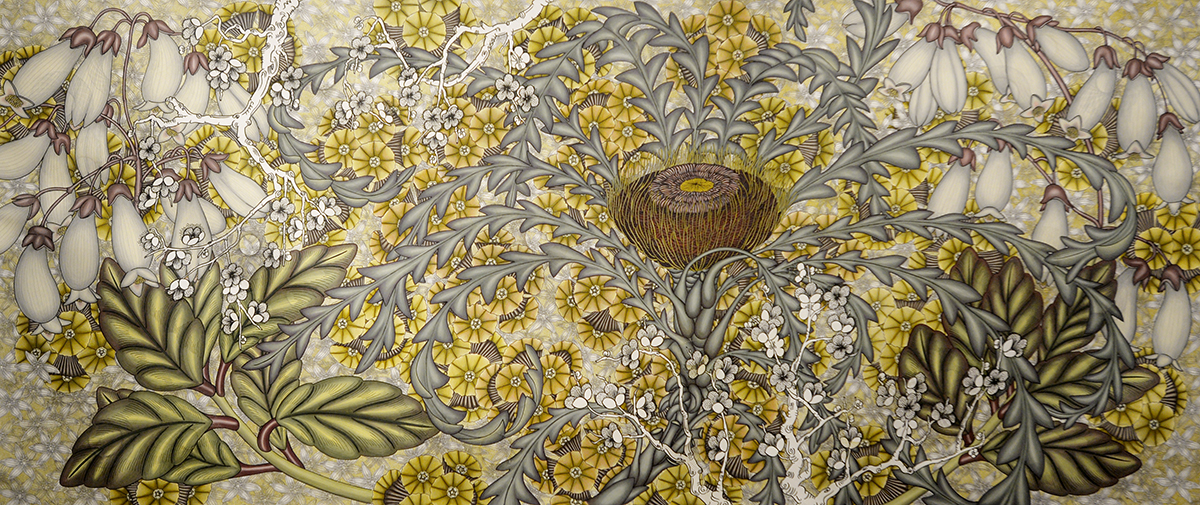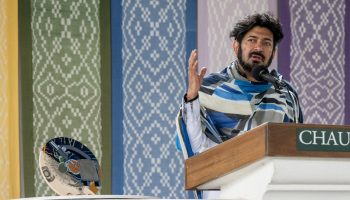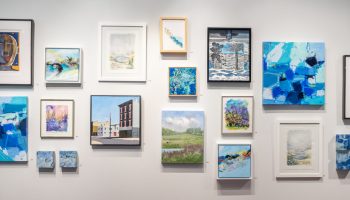The title of this exhibition immediately presents a curious paradox, certainly when discussing the history of art. “Redefine” is the emblematic post-modern catchword; “nature” is the archetypal imagery of traditional painting. Artists, critics and art historians have certainly made Herculean efforts to recontextualize and re-evaluate most every tenet of art, but what about art’s three rudimentary subjects: the figure, the still life and the landscape? Figure painting has certainly been resurrected after modernism’s “death of painting,” perhaps beginning with photorealism. Still life, since Andy Warhol, has evolved from a table full of fruit to include almost everything in any manifestation. What about that humble, conservative landscape and its close friend, nature? I might suggest any attempts to reinvent that wheel have been considered less-than worthy, or, quite possibly, impossible. How does an artist work to “reinvent” something that has its beginnings … well, at the beginning of art?

The four artists in this show, curated by the Susan and Jack Turben Director of VACI Galleries Judy Barie, invite us to explore our expectations of what art about nature should and can be. Brooklyn-based Nancy Blum has created absolutely stunning large-scale, mixed-medium drawings on paper, which borrow directly from the style and subject of 16th- and 17th-century botanical illustration, but Blum, inventively, combines species of plants that would never exist together in nature. Aside from the interesting conceptual element, the drawings are breathtaking. In “Harmony” she has drawn two enormous and obsessively detailed bulbous flora; cherry-blossom-inspired flowers are layered on top. With a backdrop of a repeated orchid pattern, the imagery easily transitions from the directly observed to the fantastical, presenting a fresh take on the tired genre of botanical illustration.
In “Structured Composition — Frost Bloom,” David Hicks creates works that represent the transitions in nature from fertilization to decay. Abstracted, ceramic forms suggest vegetation, yet all appear to be covered with a textured coating of moss, barnacles or, as the title suggests, frost. Twenty or so hand-sized forms with thick “stems” are supported and encased by a web of stainless-steel “scaffolding” attached to the wall. That scaffolding creates an intricate, maze-like shadow behind it. The mechanical steel cage around the organic forms, combined with the artist’s choice to show the plants in a state of deterioration, gives the subject of nature a decidedly contemporary voice, especially in light of the fact that Hicks states his inspiration often comes from the agricultural industry in the fields surrounding his home.
Shoji Satake, associate professor and coordinator of ceramics at West Virginia University, has created sculptures from slip-cast porcelain, stoneware and 3-D printed forms. The utilization of the 3-D printer to generate elements of otherwise handcrafted, nature-inspired objects places his art between tradition and technology. The objects themselves suggest underwater life, such as corals and sandbars. The beautiful textural contrast between the dry, scumbled surface of the neutral-colored “sandbars,” and the shiny, smooth, brightly colored “corals” are visually stunning. The variety of forms he is able to create using this formula speaks to his inventiveness.

Finally, Rain Harris creates incredibly intriguing, delicate sculptures that either project from the wall or sit on a pedestal. The sculptures all consist of a finely crafted base, made of either wood or porcelain. On top of each of those bases, sits one small plant, almost like bonsai, which, especially in the series of eight sculptures titled “Topia,” appear at first glance to be made of glass. Closer inspection reveals they are synthetic flowers and leaves that have been dipped in resin or porcelain. They take on the appearance of something between the Little Shop of Horrors and a rare, exotic succulent. The shiny surface on the plants and the bases gives them a finish so perfect that they appear machine-made.
The work on view proves that nature can be “redefined” through inventive combinations of antiquated illustrations, or by alluding to industry in relation to agriculture, or simply utilizing modern technology or materials in combination with the traditional. These four artists convincingly take inspiration from nature and recreate it with a contemporary spin.
Melissa Kuntz has written reviews for Art in America and the Pittsburgh City Paper while also maintaining a studio practice. She is currently professor of painting at Clarion University of Pennsylvania.






